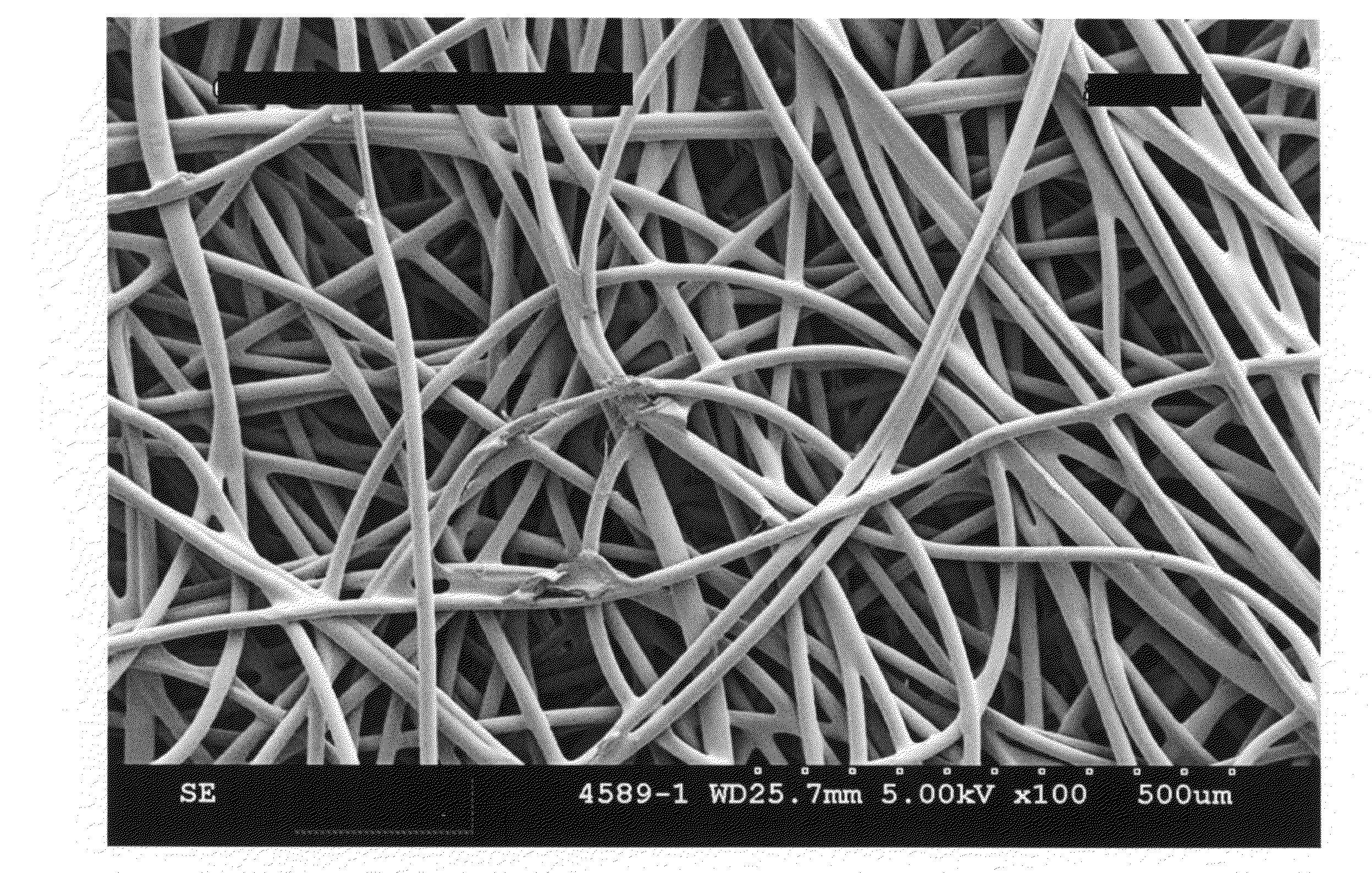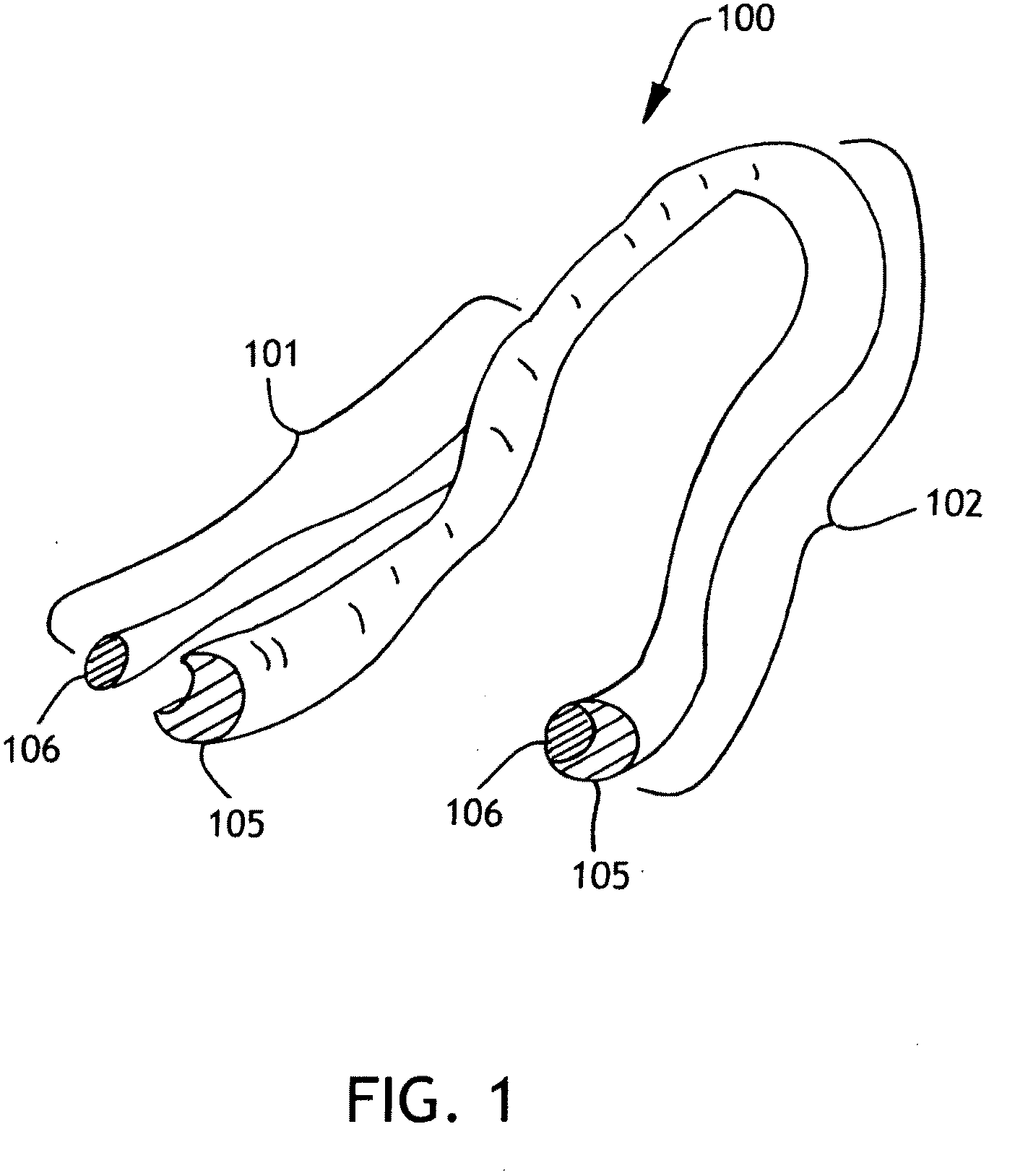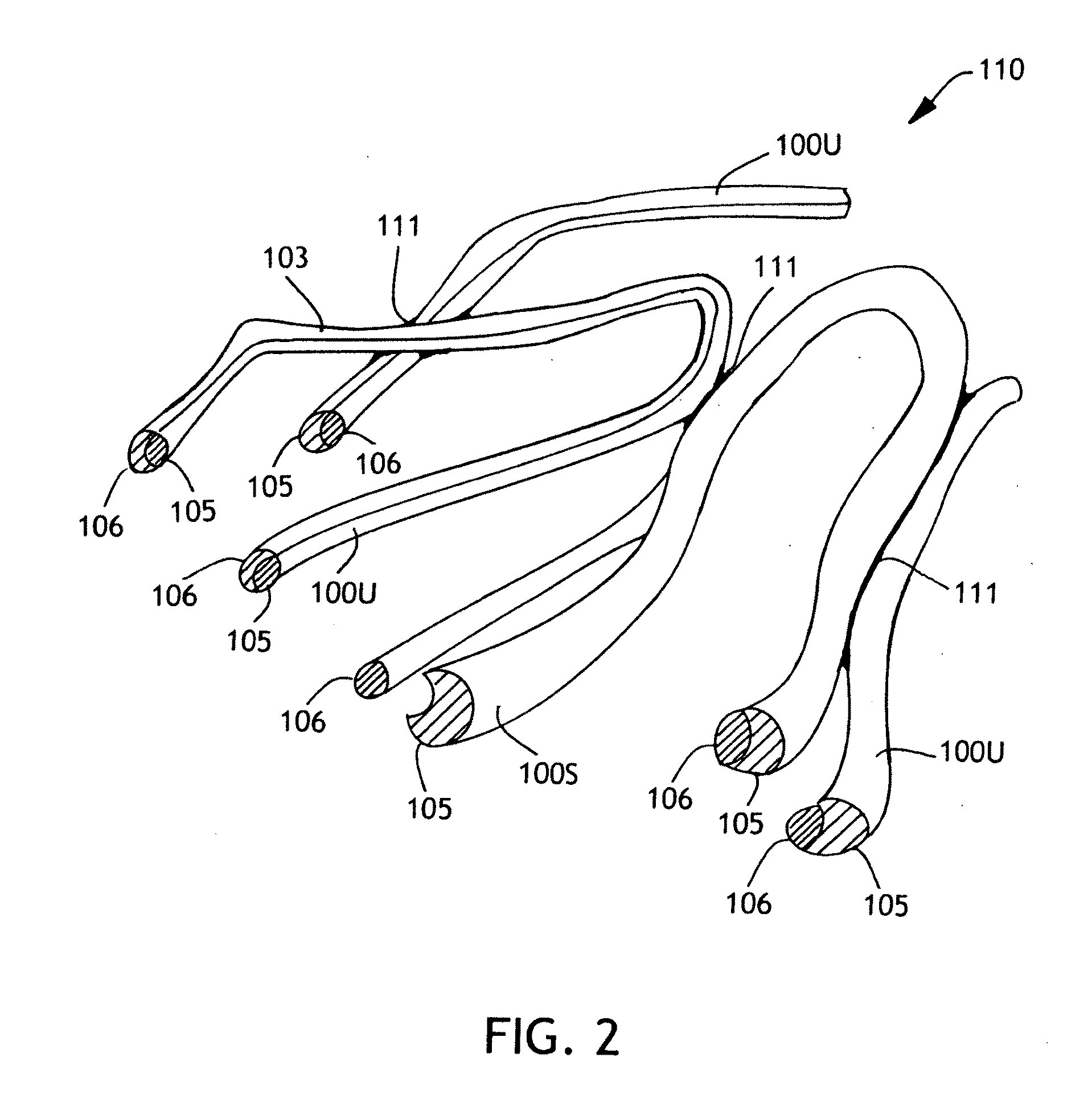Nonwoven web and filter media containing partially split multicomponent fibers
a multi-component fiber, nonwoven technology, applied in weaving, textiles, textiles and papermaking, etc., can solve the problems of increasing the pressure drop across the filtration media, reducing the useful life general inverse correlation of the performance requirements of the filter media, so as to achieve high filtration efficiency and reduce the pressure drop
- Summary
- Abstract
- Description
- Claims
- Application Information
AI Technical Summary
Benefits of technology
Problems solved by technology
Method used
Image
Examples
example 1
[0097]A pentalobel shaped bicomponent fiber spunbond nonwoven web was prepared in accordance with FIG. 3, except the hydroentangling was conducted off-line rather than in-line. The bicomponent fibers are prepared from 50% by weight of a linear low density polyethylene and 50% by weight of isotactic polypropylene, in a side by side configuration. The nonwoven web has a basis weight of about 93 grams per square meter (gsm) and a bulk density of about 0.0367 g / cm3. As a control a portion of the nonwoven web was not hydroentangled. Another portion of the nonwoven web was hydroentangled with 2 injectors at a pressure of 700 psi with a single pass through the injectors. Hydroentangling was performed at a line speed of about 600 feet per minute. Air permeability and efficiency were determined using the test procedures described above and are plotted on FIG. 5.
[0098]A second sample of the control and the hydroentangled filter material were tested under ASHRAE 52.2 1999 test described above....
example 2
[0099]A pentalobel shaped bicomponent fiber spunbond nonwoven web was prepared in accordance with FIG. 3, except the hydroentangling was conducted off-line rather than in-line. The bicomponent fibers are prepared from 50% by weight of a linear low density polyethylene and 50% by weight of isotactic polypropylene, in a side by side configuration. The nonwoven web has a basis weight of about 68 grams per square meter (gsm) and a bulk density of about 0.0393 g / cm3. As a control a portion of the nonwoven web was not hydroentangled. Another portion of the nonwoven web was hydroentangled with 2 injectors at a pressure of 700 psi with a single pass through the injectors. Hydroentangling was performed at a line speed of about 600 feet per minute. Air permeability and efficiency were determined using the test procedures described above and are plotted on FIG. 5.
[0100]A second sample of the control and the hydroentangled filter material were tested under ASHRAE 52.2 1999 test described above....
example 3
[0101]Round bicomponent fiber spunbond nonwoven web was prepared in accordance with FIG. 3, except the hydroentangling was conducted off-line rather than in-line. The bicomponent fibers are prepared from 50% by weight of a linear low density polyethylene and 50% by weight of isotactic polypropylene, in a side by side configuration. In addition, the nonwoven web contains isotactic polypropylene fibers which are produced in the same process and are blended in with the bicomponent fibers. The nonwoven web has about 25% propylene monocomponent fibers and about 75% bicomponent fibers. The nonwoven web has a basis weight of about 110 grams per square meter (gsm) and a bulk density of about 0.1033 g / cm3. As a control a portion of the resulting nonwoven web was not hydroentangled. Another portion of the nonwoven web was hydroentangled with 2 injectors at a pressure of 700 psi with a single pass through the injectors. Hydroentangling was performed at a line speed of about 600 feet per minute...
PUM
| Property | Measurement | Unit |
|---|---|---|
| Percent by mass | aaaaa | aaaaa |
| Percent by mass | aaaaa | aaaaa |
| Percent by mass | aaaaa | aaaaa |
Abstract
Description
Claims
Application Information
 Login to View More
Login to View More - R&D
- Intellectual Property
- Life Sciences
- Materials
- Tech Scout
- Unparalleled Data Quality
- Higher Quality Content
- 60% Fewer Hallucinations
Browse by: Latest US Patents, China's latest patents, Technical Efficacy Thesaurus, Application Domain, Technology Topic, Popular Technical Reports.
© 2025 PatSnap. All rights reserved.Legal|Privacy policy|Modern Slavery Act Transparency Statement|Sitemap|About US| Contact US: help@patsnap.com



